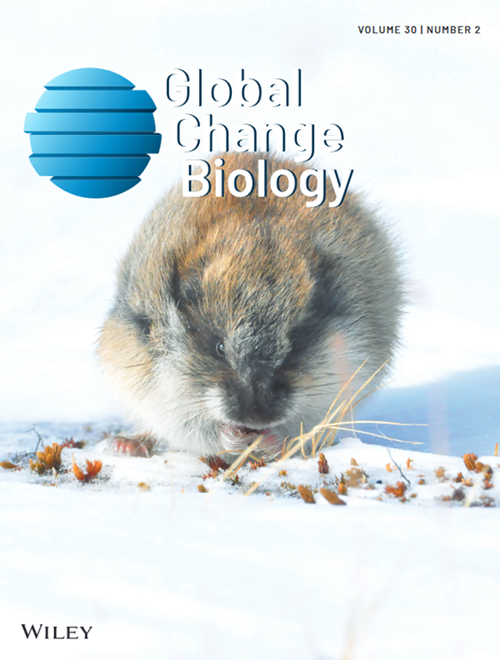一个世纪以来候鸟的繁殖分布随非繁殖期降雨量的变化而波动
IF 12
1区 环境科学与生态学
Q1 BIODIVERSITY CONSERVATION
引用次数: 0
摘要
物种对气候变化的反应包括分布、丰度和范围限制的变化。考虑到气候变化在整个年周期中影响物种的方式的多样性,预测候鸟的这种变化本质上是复杂的。例如,最近的研究结果表明,牙买加的非繁殖地美洲红尾鸲(Setophaga ruticilla)的非繁殖地种群的繁殖起源正在向南转移,以应对非繁殖地的长期干旱,这不同地导致了长期迁徙个体的存活率降低。在这里,我们研究了在过去的一个世纪里,这种机制在整个物种的范围内是如何广泛运作的。我们从博物馆标本和活鸟的尾羽中取样,这些标本和活鸟来自五个地区(安第斯山脉、大安的列斯群岛、地峡、太平洋斜坡和尤卡坦半岛),它们的非繁殖期可以追溯到20世纪之交,并使用稳定的氢同位素来估计繁殖期的变化。我们使用ANCOVA估计了自20世纪初以来每个非繁殖期红鳉种群的平均繁殖起源的转移强度,以及非繁殖期降雨在驱动观测到的转移中的作用。在其热带非繁殖地经历降雨干燥趋势的红鳉种群在随后的年份中表现出相应的平均繁殖地南移(反之亦然)。非繁殖期降雨量与平均繁殖期起源之间的联系在现代时期最为明显,在大部分红start非繁殖期范围内,非繁殖期降雨量都有所减少。我们的研究结果说明了复杂的机械驱动因素如何在空间和时间上运作,以帮助塑造候鸟的繁殖范围动态,并强调了气候如何影响整个年周期的物种分布。本文章由计算机程序翻译,如有差异,请以英文原文为准。
The Breeding Distribution of a Migratory Bird Fluctuates With Nonbreeding Season Rainfall Over the Last Century
Species responses to climate change include shifts in distribution, abundance, and range limits. Predicting such shifts for migratory birds is inherently complex given the diversity of ways climate change can impact species throughout their annual cycles. For example, recent findings demonstrate that the breeding origin of a nonbreeding population of American redstarts (Setophaga ruticilla
求助全文
通过发布文献求助,成功后即可免费获取论文全文。
去求助
来源期刊

Global Change Biology
环境科学-环境科学
CiteScore
21.50
自引率
5.20%
发文量
497
审稿时长
3.3 months
期刊介绍:
Global Change Biology is an environmental change journal committed to shaping the future and addressing the world's most pressing challenges, including sustainability, climate change, environmental protection, food and water safety, and global health.
Dedicated to fostering a profound understanding of the impacts of global change on biological systems and offering innovative solutions, the journal publishes a diverse range of content, including primary research articles, technical advances, research reviews, reports, opinions, perspectives, commentaries, and letters. Starting with the 2024 volume, Global Change Biology will transition to an online-only format, enhancing accessibility and contributing to the evolution of scholarly communication.
 求助内容:
求助内容: 应助结果提醒方式:
应助结果提醒方式:


